
| Caper White (formerly known as Anaphaeis java) PIERINAE, PIERIDAE, PAPILIONOIDEA | (donherbisonevans@yahoo.com) and Stella Crossley & Valda Dedman |
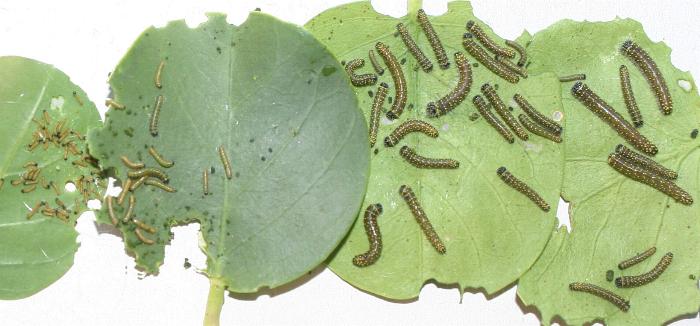
various early instars
(Photo: courtesy of Ellen Reid,
The Bible Museum,
St Arnaud, Victoria)

| Caper White (formerly known as Anaphaeis java) PIERINAE, PIERIDAE, PAPILIONOIDEA | (donherbisonevans@yahoo.com) and Stella Crossley & Valda Dedman |

various early instars
(Photo: courtesy of Ellen Reid,
The Bible Museum,
St Arnaud, Victoria)
The first instar Caterpillars of this species have a pale yellow body sparsely covered with long hairs, and a shiny black head. The mature caterpillar is dark brown tinged with green, decorated with pale dots and raised yellow spots. A fringe of long white hairs runs along each side of the body. The head is black with a pale 'V' shaped mark and yellow dots.

The caterpillar has been found feeding on various members of the family CAPPARACEAE :
as well as
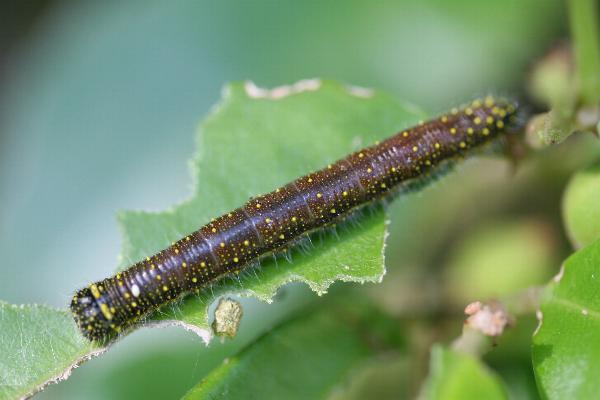
We have found that the caterpillars are very economical. On average, each caterpillar ate about three medium sized leaves during their whole life cycle. This is very little compared with that eaten by some other caterpillars of comparable size, for example the various agricultural pest species in NOCTUIDAE.
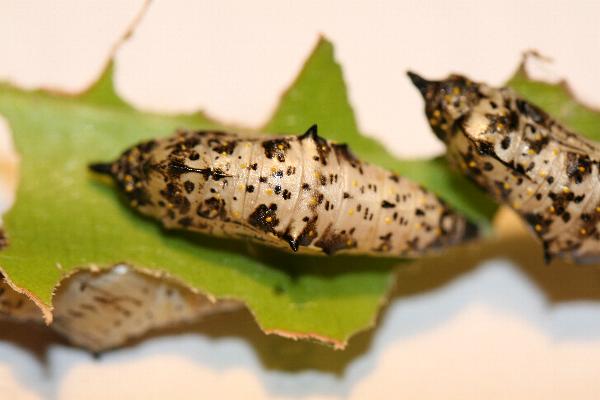
After the caterpillar has eaten for about three weeks, it grows to a length of about 3 cms. It pupates on its foodplant. The pupa is white with black markings, and has a length of about 2.5 cms. In December in Melbourne, the adult butterfly emerges after about two weeks.
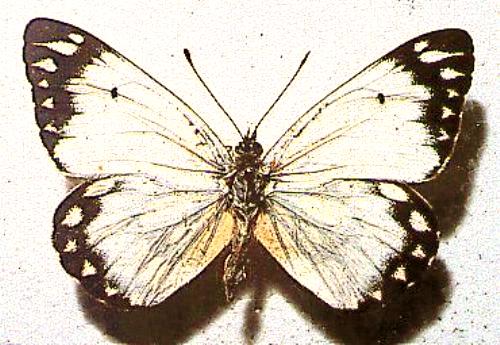

Male
(Specimens: courtesy of the
The Australian Museum)
The adult male butterfly has white wings. The upper and lower surfaces of the fore wings have a broad black apical patch, and the upper surfaces of the hind wings have a black terminal border. The black areas enclose white spots.
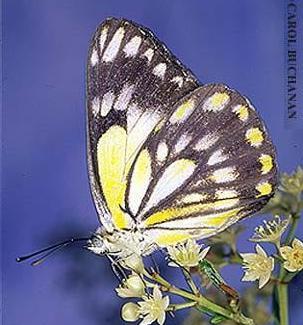
| 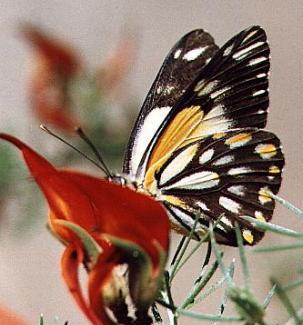
|
The under surfaces of the hind wings are black except for white patches between the veins, and a yellow hind margin and a subterminal arc of yellow spots. The male wingspan is about 5 cms.
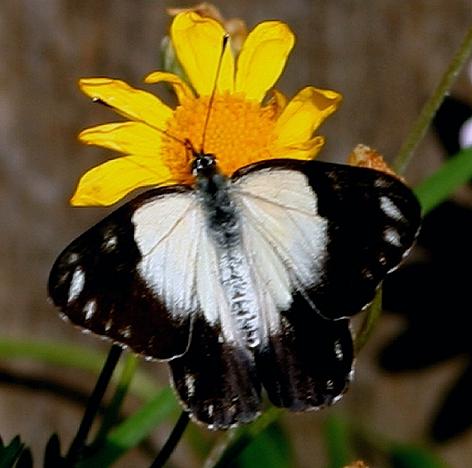
The adult females are larger, with a wingspan about 6 cms., and are variable in colour. Pale forms have the undersurfaces of their wings similar to those of the male, but can be distinguished from the male by the upper surfaces, which have wider black borders. Dark forms of the female have orange wing upper surfaces, with broad black borders containing white spots. Underneath, orange replaces white. All graduations between the pale and dark forms occur in the same population.
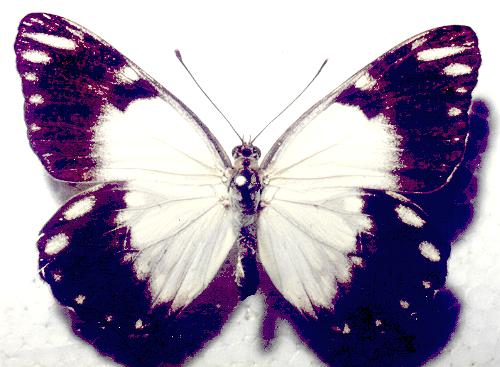

Female
(Specimens: courtesy of the
The Australian Museum)
The eggs are initially white, later turning orange, and are laid in a spaced group on the surface of a leaf of a food plant.

The species is found as several subspecies across Asia including
and in Australia as two subspecies :
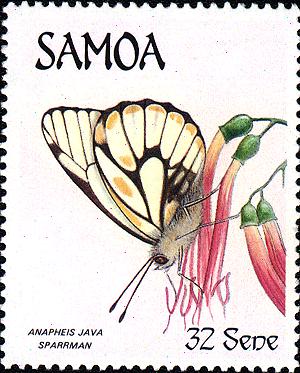
The food plants mainly grow wild in the northern two-thirds of continent. In spite of this, the Caper White butterfly frequently migrates south in summer. In October 1998, mass migrations occurred in Sydney. Migrations to Victoria happen more sporadically. but for example have been observed in November and in January. There are only a few Caper trees in Melbourne, and it is interesting that the butterflies locate these particular trees and lay eggs on them. How the butterflies find these few trees is unclear. Anyway, as a result of these migrations, the species is found all over the continent, including
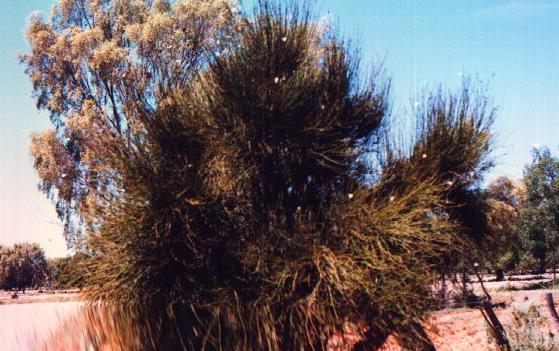
The male and female Caper White butterflies appear to migrate separately. For example, on 17 October 2000 at Point Addis, Victoria, 50-100 males were seen sheltering from the wind and rain, right on the cliff top. They were cold and inactive and could easily be picked up. Presumably they had come south the previous day on warm northerly winds. When the rain stopped for a few moments, one or two were observed hovering above the bush at the edge of the ocean. Another was on a bush, close to the ground, in the nearby Ironbark Basin. It, too, was cold and could easily be approached.
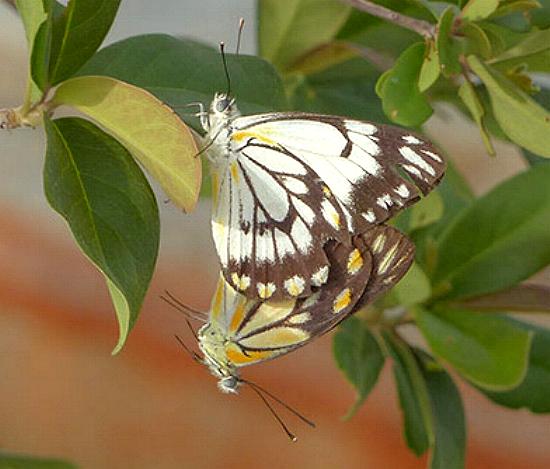
Further reading :
Carl Linnaeus,
Iter Chinense,
Amoenitates Academicae,
Volume 7 (1768), p. 504, species "L".
Jean-Baptiste Alphonse Dechauffour de Boisduval,
Communications,
Annales de la Société entomologique de France,
Volume 3, Part 7 (1859), p. CLV, No. 4.
Michael F. Braby,
Butterflies of Australia,
CSIRO Publishing, Melbourne 2000, vol. 1, pp. 321-322.
Johan Christian Fabricius,
Historiae Natvralis Favtoribvs,
Systema Entomologiae,
Flensburgi et Lipsiae (1775), p. 474, No. 137.
Frank Jordan & Helen Schwencke,
Create More Butterflies : a guide to 48 butterflies and their host-plants
Earthling Enterprises, Brisbane, 2005, p. 10.
Buck Richardson,
Tropical Queensland Wildlife from Dusk to Dawn Science and Art,
LeapFrogOz, Kuranda, 2015, p. 222.
 caterpillar |  butterflies |  Lepidoptera |  moths |  caterpillar |
(updated 5 January 2010, 18 November 2025)